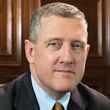President's Message: A Quarterly Monetary Policy Report Would Improve Fed Communications
The Federal Open Market Committee (FOMC) has increased the degree of transparency surrounding monetary policy in a number of ways since the 1990s. For example, the FOMC now releases a statement shortly after each meeting and releases the minutes of the meeting three weeks later. In addition, Fed Chairman Ben Bernanke now conducts four press briefings a year. A further step toward more transparency would be a quarterly monetary policy report for the U.S., as I have called for in the past. Many other central banks around the world, including the Bank of England, the European Central Bank, the Reserve Bank of New Zealand and the Riksbank, already publish such a report on a regular basis.
Currently, the FOMC releases a Summary of Economic Projections four times a year, which includes projections for a few economic variables and for the future path of the target federal funds rate. With 19 FOMC participants, however, there are potentially 19 different sets of forecasts based on 19 different models and 19 different policy assumptions. Thus, while the Summary of Economic Projections provides helpful information, communications about how the FOMC views the economy could be improved.
A quarterly monetary policy report could potentially provide a more complete discussion of the state of the U.S. economy and the likely direction going forward. This report could also include a discussion of the risks facing the economy and the possible impact of special situations (e.g., natural disasters). Such a report should be forward-looking and should contain forecasts as the Summary of Economic Projections does. The release of the new report could be coordinated with the chairman's press briefings.
The main benefit of a quarterly monetary policy report would be improved communication with financial markets and the American public about how the FOMC views the key issues facing the U.S. economy. This view could serve as a benchmark for the discussion of monetary policy and the state of the economy, both for policymakers and for those in the private sector.
The report should also be able to give a sense of the amount of uncertainty surrounding U.S. economic performance. Too much emphasis tends to be placed on specific values for the forecasts and not enough on the notion that we do not really know how the economy will evolve. The Bank of England includes probabilities of a wide range of outcomes, which reflects how much uncertainty exists. The Fed should do the same.
An important question to address regarding a quarterly monetary policy report is: Whose forecast for the U.S. economy would serve as the baseline Fed view? The Board of Governors staff could construct this forecast under the chairman's guidance. Given that the chairman typically stays in the middle of the Committee, the natural outcome would be a forecast that is not too different from the central tendency of the FOMC.
As with any forecast of the economy, the forecast in a quarterly monetary policy report must be based on certain assumptions about future monetary policy. My preference is to use the market's expectation of future policy (on both the interest-rate side and the balance-sheet side) at the time the forecast is made. By using the market's expectation rather than the Committee's, the FOMC participants would avoid potentially giving the appearance of committing to a specific path for policy and would be able to adjust future policy as they deem necessary. Using the market's expectation would also put the forecast on the same basis as private sector forecasts.
Of course, not every single person on the FOMC would necessarily agree with the baseline forecast in the report. Voting on a forecast, however, would be very complicated and would not make sense. Participants could instead give their own forecast separately and explain how their view differs from the baseline Fed view. For instance, a participant's forecast for GDP may be higher, or his or her assessment of a certain risk may not be as large. Thus, the policy debate would not go away; it would simply revolve around the baseline.
Overall, a quarterly monetary policy report for the U.S. would be an improvement in Fed communications, and it would bring us up to the standards of international transparency.
Views expressed in Regional Economist are not necessarily those of the St. Louis Fed or Federal Reserve System.
For the latest insights from our economists and other St. Louis Fed experts, visit On the Economy and subscribe.
Email Us


